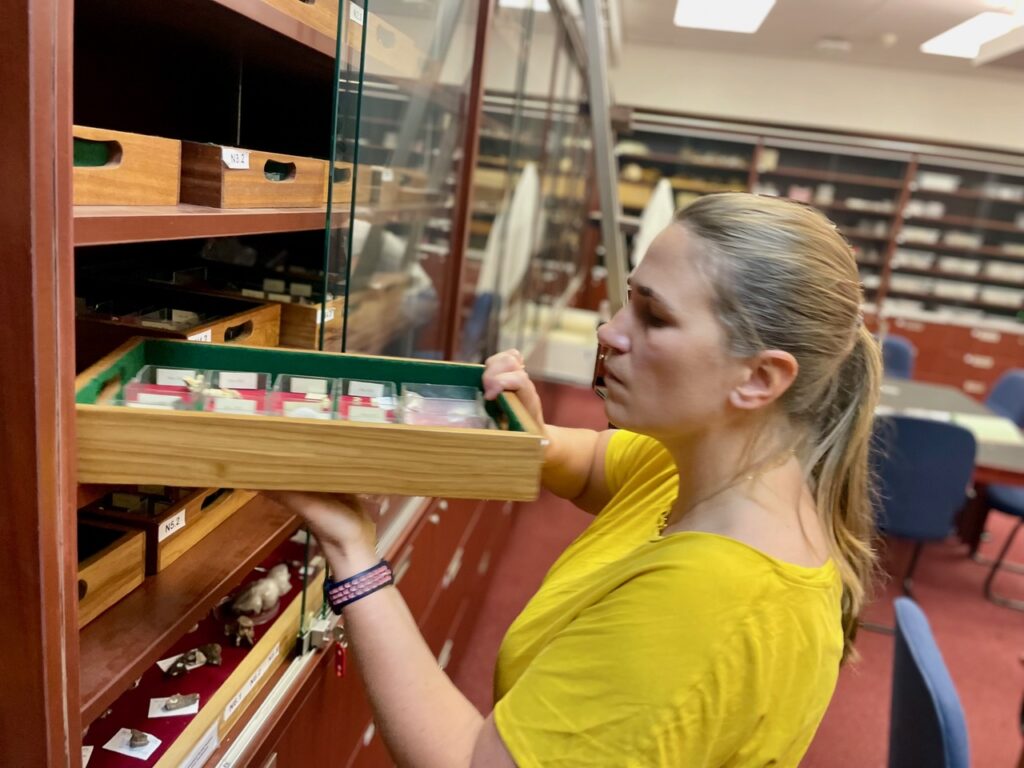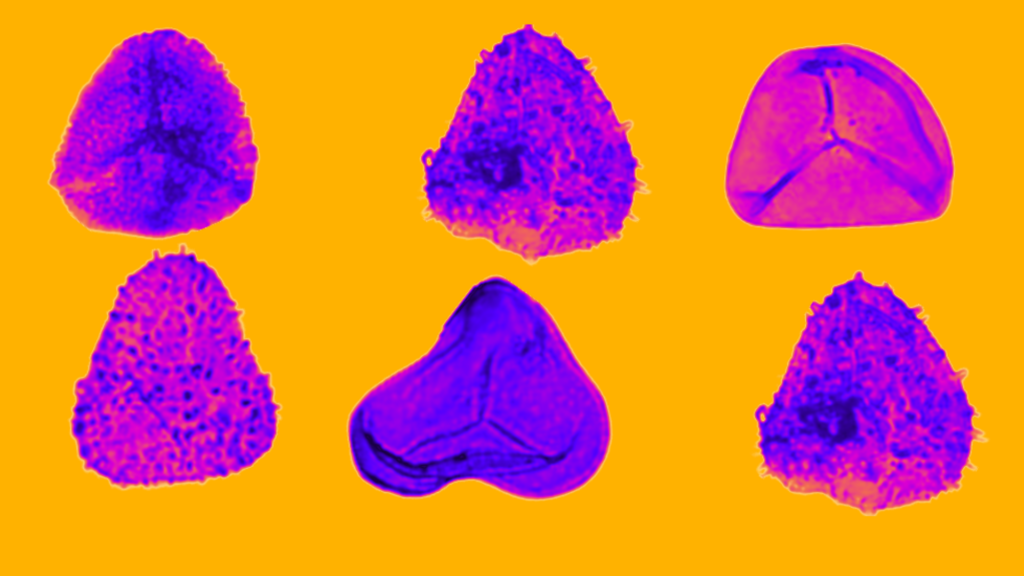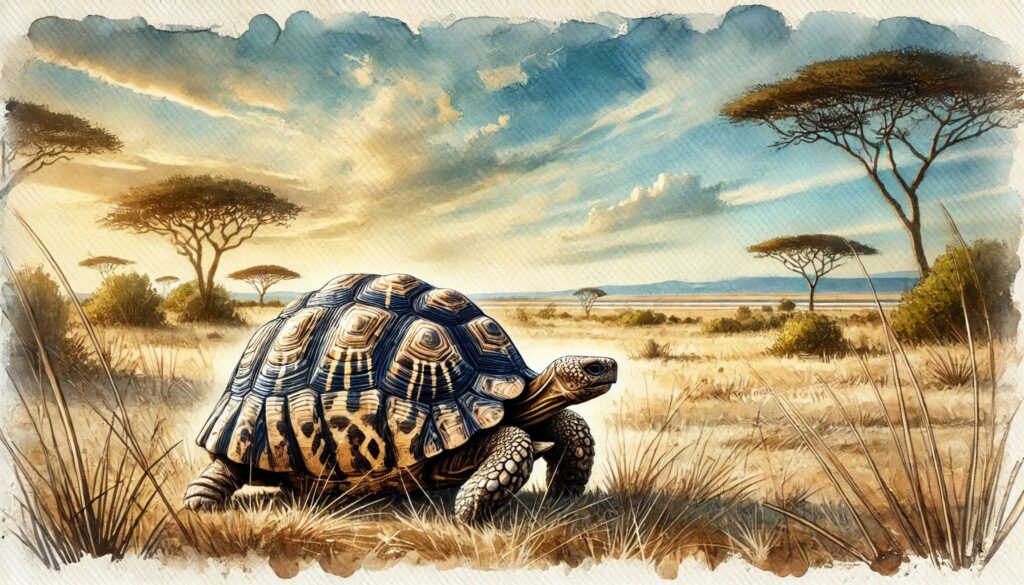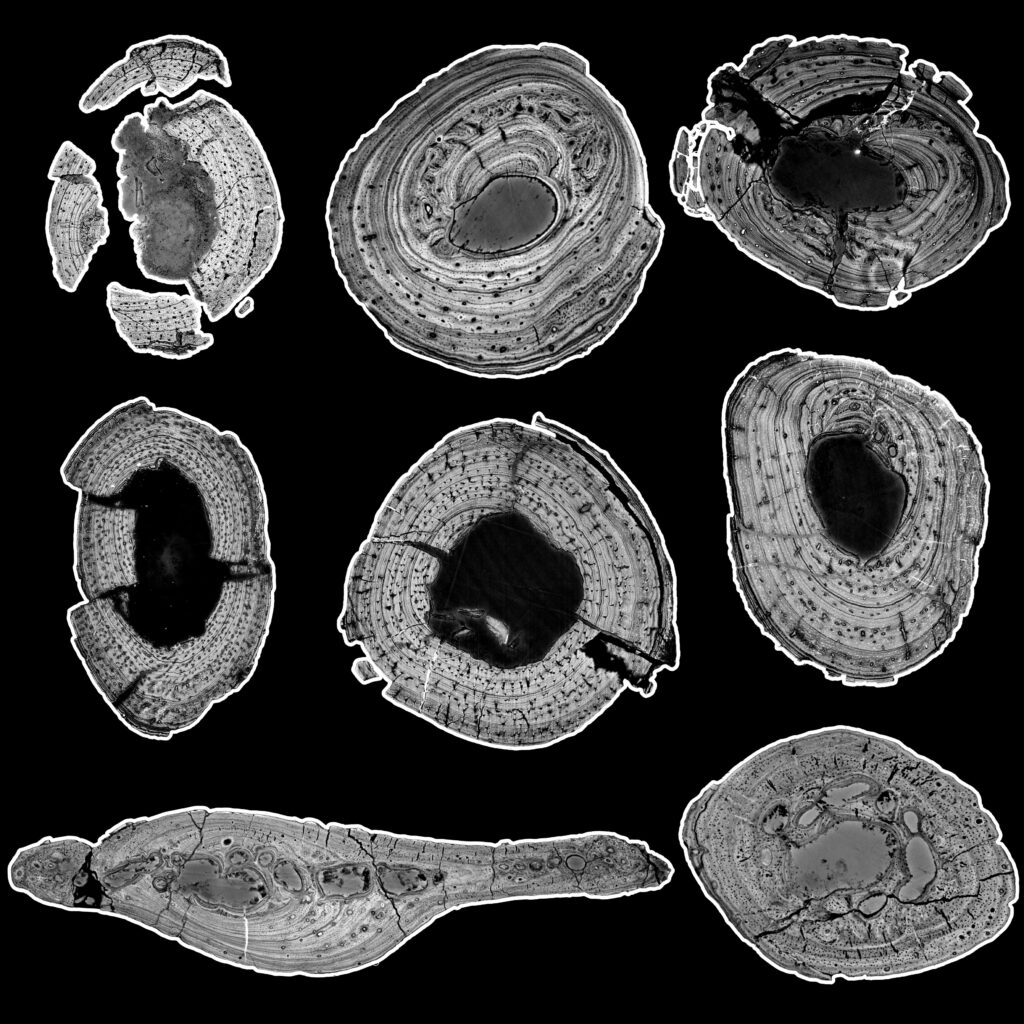Breathing Life into the Past: The Mesmerising World of Prehistoric Art

A prehistoric landscape created with the help of AI shows it lagging far behind humans when it comes to good-looking recreations!
Enter a world of wonder and fascination as we explore the magnificent creatures that once inhabited our planet, soared through the skies, and gracefully swam in the depths of the oceans. Unravelling the mysteries of these ancient ecosystems would not be possible without the enchanting realm of palaeontological art, where the imaginative visions of talented artists bring the past to life. Merging scientific knowledge with artistic expertise, these skilled individuals breathe new existence into long-extinct creatures and transport us to prehistoric landscapes, offering captivating glimpses into the vibrant and diverse ancient worlds that once teemed with remarkable life.

One of the earliest scientifically named dinosaurs was Megalosaurus, with its lower jaw being a significant discovery in the field of paleontology. Image credit: Wikipedia
The origins of palaeontological art can be traced back centuries when early explorers and scientists began to unearth fossilised remains of ancient organisms. Although people probably found dinosaur fossils berfore, the first scientifically recognised dinosaur fossil was found and formally named in 1824. The discovery was a fragment of a large thigh bone discovered by William Buckland, an English geologist and palaeontologist. Buckland named the dinosaur Megalosaurus, which means “great lizard.” Megalosaurus was only identified as a dinosaur much later, because the word “dinosaur” wasn’t invented until eighteen years later, by Sir Richard Owen, an English biologist, comparative anatomist and palaeontologist.
This discovery marked the beginning of our understanding of dinosaurs and sparked a fascination that continues to this day. Immersed by these discoveries, artists sought to visualise these long-lost creatures, igniting the imagination of both scientists and the public. Megalosaurus was one of the first dinosaurs to be reconstructed and displayed to the public; in 1854 visitors to the London Museum were able to behold the world’s first full-sized dinosaur models of Megalosaurus. Unfortunately, because these early artists lacked a complete understanding of reconstruction and natural history, many of the artistic depictions looked comically crude and more like scaled-up lizards than actual dinosaurs! Amusingly, the depiction below came with a warning on Wikipedia: “Note: This historical image is not a factually accurate dinosaur restoration. Reason: Based on insufficient material and science.”

Megalosaurus was initially described as a 50-foot-long, four-footed lizard, like an iguana scaled up. Painted by Édouard Riou, 1863. Image credit: Wikimedia Commons.

The first Megalosaurus reconstruction was displayed at the Crystal Palace public exhibition of 1854, in London. Image credit: Natural History Museum
Luckily, as time progressed and the understanding of science and dinosaurs advanced, artistic reconstructions became more realistic and accurate. The field of dinosaur reconstruction, also known as palaeoart, owes much of its development to the contributions of several pioneers who dedicated their talents to bringing these ancient creatures back to life. Through their artistic interpretations, these individuals have significantly enhanced our understanding of dinosaurs.

Artist’s impression of how historic palaeontologists thought the Megalosaurus looked (on the left) is compared with how we now understand it to have looked (on the right). Image Credit: University of Warwick/Mark Garlick
One notable pioneer in the field of dinosaur reconstruction was Charles Knight (1874-1953), an American wildlife and palaeoartist. Active in the early 20th century, Knight is considered a founding father of the field. Despite being legally blind due to astigmatism, he created realistic and scientifically informed illustrations of dinosaurs. Based on the latest scientific knowledge at the time, his paintings and sculptures played a crucial role in shaping public perception and understanding of these prehistoric creatures.

To create an image of a dinosaur, Knight first started with the bone structure. Here, he creates a sculpture of a Stegosaurus skeleton in 1899. Image credit: American Museum of Natural History
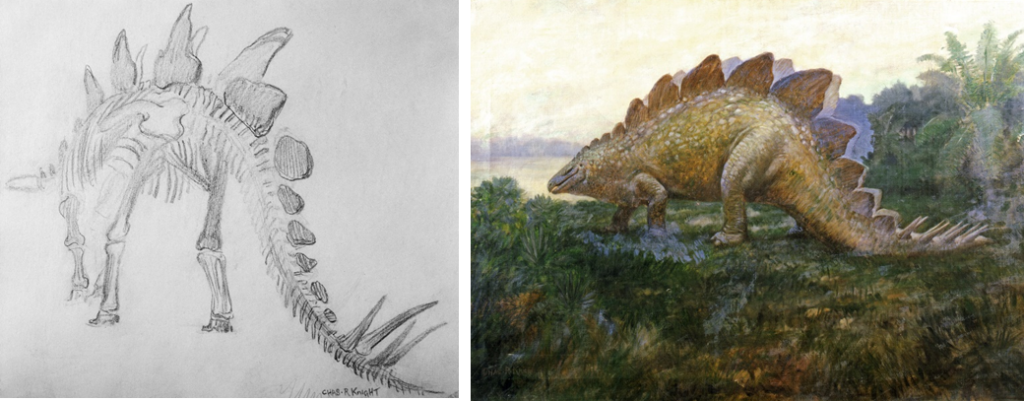
On the left – A pencil sketch of a Stegosaurus skeleton by Knight. Image credit: Rhoda Knight Kalt. On the right is the final painting. Image credit: American Museum of Natural History
Another influential figure, Rudolph Zallinger, left a lasting impact on palaeoart with his monumental mural “The Age of Reptiles.” Completed in 1947 for the Peabody Museum of Natural History at Yale University, Zallinger’s mural spans over 30 meters and depicts the evolution of life, including dinosaurs, from the Palaeozoic to the Cenozoic era. The mural remains an iconic representation of prehistoric life, capturing the diversity and grandeur of ancient creatures.

A section of Rudolph Zallinger’s classic “The Age of Reptiles” mural (1943-1947) at Yale University’s Peabody Museum. Image credit: Pinterest
These early pioneers, among many others since, have contributed immensely to the field of palaeoart, bridging the gap between science and art to create visually stunning and scientifically accurate representations of dinosaurs. Their work has not only captivated audiences but has also influenced the scientific understanding and inspired future generations of palaeoartists.
The Artistic Process:
The process of creating palaeontological art is a delicate endeavour that requires striking a balance between scientific accuracy and artistic interpretation. Palaeoartists work closely with palaeontologists and scientists, immersing themselves in the study of fossils, scientific papers, and reconstructions. This collaboration enables them to gain insights into the anatomy, behaviour, and ecology of ancient organisms. Armed with this knowledge, they embark on a meticulous journey to breathe life into these long-extinct creatures.
Palaeoartists employ a range of artistic techniques to evoke a sense of realism. Their creative process begins with rough sketches and reference materials, allowing them to explore different compositions and conceptualise their ideas. As they progress, they refine their sketches through multiple drafts, gradually perfecting the desired portrayal of the ancient creatures.

Image depicting the step-by-step reconstruction of the head of Smilodon, a prehistoric sabre-toothed predator. A) skull and mandible; B) with reconstructed masticatory muscles and neck musculature; C) with superficial musculature; D) True life appearance. Image credit: Mauricio Anton in Turner et al 2011.
Scientific insights play a crucial role in the artistic process. Palaeoartists integrate their knowledge of anatomy, informed by studies of skeletal remains and fossil evidence, to accurately depict the skeletal structure, musculature, and external features of the creatures. By incorporating scientific data and observations, they ensure that their reconstructions align with current scientific understanding.
In addition to the physical attributes, palaeoartists consider the creatures’ environment and interactions with other organisms. They study palaeoenvironments, analysing geological records and consulting with palaeontologists to reconstruct realistic habitats. This attention to detail allows them to create scenes that transport viewers back in time, showcasing the creatures in their natural contexts.

A Diceratosaurus (a nectridean) with eyes bigger than its stomach, attacks a juvenile Oestocephalus (an aistopod, a stem tetrapod). Initial sketch on the left and final product on the right. Image credit: Gabriel Ugueto Art
To bring their visions to life, palaeoartists utilise various artistic mediums and tools. Some employ digital techniques, using specialised software to digitally sculpt, paint and animate their creations. These digital tools offer a high degree of flexibility, allowing for detailed manipulations and precise rendering of textures and lighting effects. Others prefer traditional painting techniques, such as watercolours, acrylics, or oils, to capture the organic and tactile qualities of their subjects. These traditional mediums require meticulous brushwork and a deep understanding of colour theory and shading to achieve a lifelike appearance. Many palaeoartists employ a combination of digital and traditional methods, leveraging the advantages of each to create the most compelling and scientifically accurate representations.
The Power of Palaeontological Art:
Palaeontological art has the unique ability to bridge the gap between science and the public, captivating audiences of all ages. These stunning visual representations ignite our curiosity and transport us to a time long gone. They enable us to witness the majesty of a Tyrannosaurus rex stalking its prey, the grace of a pterosaur soaring through ancient skies, or the epic battles between massive sauropods.
However, the impact of palaeontological art extends beyond simple fascination or entertainment; it plays a vital role in scientific communication and education. These illustrations and reconstructions help scientists convey complex concepts and discoveries to the public, making them accessible, engaging and simply fun. They inspire future generations of palaeontologists, igniting a passion for the natural world and the mysteries of prehistory.

The Highland Giant: Artist and scientist Viktor Radermacher’s reconstruction of what the South African dinosaur Ledumahadi mafube may have looked like. Another dinosaur watches in the foreground. 2018. Copyright Viktor Radermacher
Furthermore, palaeontological art fosters a sense of wonder and appreciation for the diversity and fragility of life throughout Earth’s history. It reminds us of our own place within the vast tapestry of life and encourages us to preserve and protect the natural world. The enduring allure of palaeontological art lies in its ability to evoke our imagination and connect us with our ancient past. It allows us to marvel at the awe-inspiring creatures that once roamed the Earth and sparks our curiosity about the mysteries of evolution. Through these vibrant and evocative artworks, we are reminded of the dynamic nature of life on our planet and our deep connection to the natural world.

Leaping Laelaps by Charles R. Knight, 1897. With this painting, Knight became one of the first painters to depict dinosaurs as fast, aggressive animals. Image Credit: American Museum of Natural History
Palaeontological art, with its captivating fusion of scientific rigour and boundless artistic creativity, serves as a captivating time machine that transports us to the realms of long-extinct species. From the trailblasing pioneers of the past to the visionary creations of contemporary palaeoartists, these stunning illustrations and reconstructions seize our imagination, kindling a profound sense of awe and wonder for the mysteries of prehistoric life. With every stroke of the brush and meticulous detail, palaeontological art transports us back in time and ignites a passion within us to understand more about the exciting creatures that once roamed our planet.
